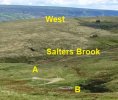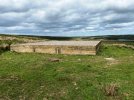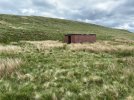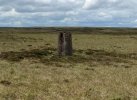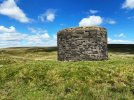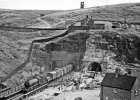tbwbear
Member
- Joined
- 28 Nov 2017
- Messages
- 263
I walked from Woodhead over the top to Dunford Bridge today.
The OS map shows 3 vent shafts -
the first one ( from the west) looked to be intact - it was a normal brick tower job. I am assuming that was from the 1845 / 53 bores.
The easterly one was just a flat brick structure sealed over - looking online I think this one used to be a full brick shaft and it used to have a picture of a class 76 on it, but was demolished and sealed several years ago - was this the 54 vent shaft ?
The middle one confused me - there was a building ( like a bothy hut) but nothing else. Has that one been sealed too ?
how many shafts were there in the first place and what is their status now ?
I understood the original tunnels had 4 - the ‘54 tunnel had one - what are the 3 on the OS map today
be interested to know....
The OS map shows 3 vent shafts -
the first one ( from the west) looked to be intact - it was a normal brick tower job. I am assuming that was from the 1845 / 53 bores.
The easterly one was just a flat brick structure sealed over - looking online I think this one used to be a full brick shaft and it used to have a picture of a class 76 on it, but was demolished and sealed several years ago - was this the 54 vent shaft ?
The middle one confused me - there was a building ( like a bothy hut) but nothing else. Has that one been sealed too ?
how many shafts were there in the first place and what is their status now ?
I understood the original tunnels had 4 - the ‘54 tunnel had one - what are the 3 on the OS map today
be interested to know....

